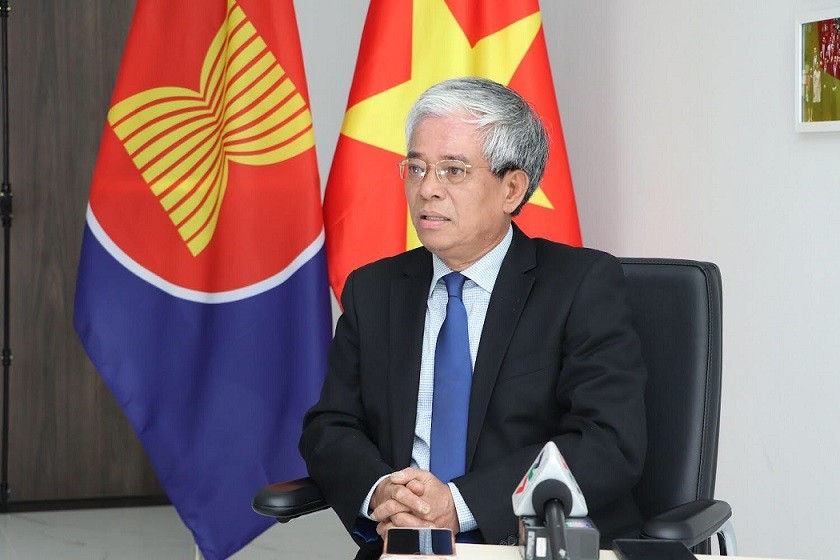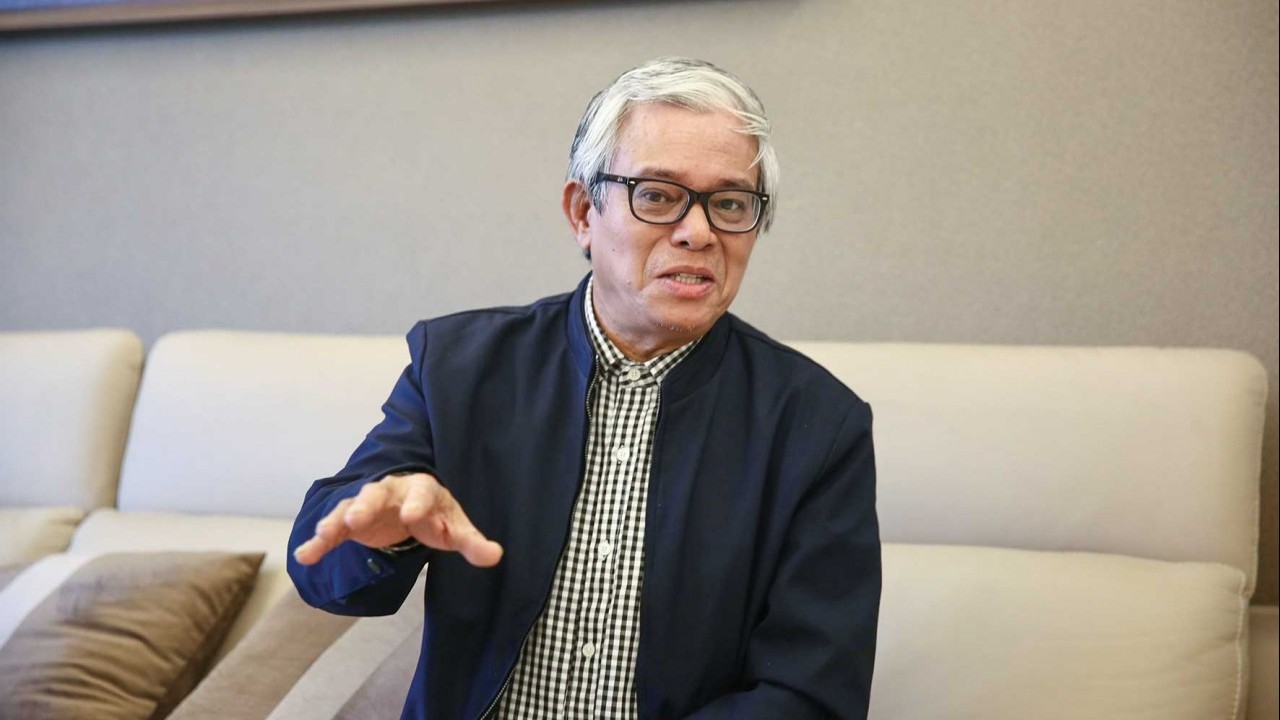
ASEAN is stronger when its community is stronger
Latest
 |
We’re proud of our ASEAN today. At 55, ASEAN has now become a community of 670 million people, with a GDP of $3.2 trillion, and a total trade volume of $2.8 trillion. And as a grouping, ASEAN could become the 4th largest economy in the world by 2030. ASEAN has been central to regional partnership for peace, security and prosperity. ASEAN has expanded its economic integration to be connected with all major economies.
An ASEAN Journey
Over the past 55 years, ASEAN has surely been going through the test of time. It has experienced ups and downs. And there’ve been lessons that continue to be valid in today’s context.
Back in 1967, ASEAN was born amidst a difficult time during the Cold War and when South East Asia (SEA) was still divided. Its birth might come with little notice at that point in time. But its vision, as imbued in the Bangkok Declaration, lives on, through the years.
The new group was meant to help keep the peace and create a framework for peaceful development, not just among the 5 original members but for the whole SEA. From there, ASEAN had to wait some 30 odd years to make it the common home of the entire SEA, during the later half of the 1990s.
This was really historic in ASEAN. It was not about the numbers. It was more about SEA from a region of division to that of unity. ASEAN-10 has since meant the whole SEA. It has been advancing the regional integration and its external partnership to an ever expanded level.
Surely there have been many milestones. Let’s be brief and recall just a few examples.
 |
| Ambassador Pham Quang Vinh, Former Deputy Minister of Foreign Affairs and Vietnam's ASEAN SOM Leader. (Photo: Quang Hoa) |
Charter: The ASEAN Charter, in effect in 2008, has enshrined the association’s purposes and principles, created a new organizational structure, and granted a legal personality, making ASEAN a rules-based organization.
Regional architecture: ASEAN has been able to engage major partners in ASEAN-initiated and driven multilateral frameworks, such as the East Asia Summit (EAS), ASEAN Regional Forum (ARF) and ASEAN Defense Ministers’ Meeting Plus (ADMM+). In economic terms, ASEAN has achieved with five partners the Regional Comprehensive Economic Partnership (RCEP), a largest trade pact that represents 30% of the world’s GDP.
Centrality: All these serve as building blocks of an evolving regional architecture, with ASEAN at the center. At the same time, ASEAN’s purposes and principles have been shared by the partners. One key example of this is the Treaty of Amity and Cooperation (TAC), which all the dialogue partners have acceded to. The TAC serves as rules of regional engagement and governance, which has, as of now, 49 high contracting parties.
Stronger together
And, the above gives us a picture. ASEAN is to endeavor peace and prosperity within itself and with the world. It therefore needs to be central to all these efforts in a larger context.
There is a myth and a reality of what is called ASEAN centrality. Centrality is something that ASEAN can and must earn and cannot take for granted. In order to be able to do so, ASEAN must be united and legitimate and it must smartly use the instrument of engagement and inclusion, among others.
Today we’re living in a fast changing geopolitical and geoeconomic landscape. The challenges are profound and complex. Those include major power rivalries, or pandemic and climate change, or disruptions in the supply chains or technology.
But the challenges are intertwined with opportunities as well. It’s also time to make a decision for a more sustainable way of development.
Stronger together ASEAN must be united and legitimate.
 |
| ASEAN is to endeavor peace and prosperity within itself and with the world. (Soure: asean.org) |
First, true to ASEAN’s purposes and principles, member states must be able to think both nationally and regionally, and to combine national interest with regional interest. The balance of these two-tiered interests has been part of the ASEAN foundation.
ASEAN members, as they’re so diverse in background, must have this balance of thinking, at national and regional levels, both at the same time. This reflects the sense of belonging and serves as the basis for enabling consultation and consensus. From there, we can overcome the differences and find a way to arrive at a certain formulation of agreement.
Second, as such, ASEAN can at the same time be able to claim and assert its legitimacy to represent what would be perceived as the regional common good.
We must remember that ASEAN is doing so, not just within itself, but more importantly, within a larger region and among the partners, who will always have very diverse, if not competing, interests.
The above will always be the starting point for ASEAN to engage and include the stakeholders in its common endeavors, for advancing peace and prosperity in the region, as well as in addressing problems that emerge.
The TAC as mentioned above, or other ASEAN documents, such as the ASEAN Outlook on the Indo-Pacific (AOIP) or ASEAN’s Six Principles on the South China Sea, all would be examples that reflect a kind of shared views from where ASEAN can work in a larger context with its partners.
Third, ASEAN is stronger when its community is stronger. ASEAN must further strengthen its community building, in all the three pillars and in relations with external partners, to 2025 and beyond. ASEAN must seek to seize the opportunities amidst the challenges to advance economic recovery and growth in a sustainable way. This includes climate resilience, secure supply chains, and technology, among others. As ASEAN moves on to the next journey, it needs to embrace its younger generation, especially through education, innovation and culture.
Finally, ASEAN must continue and further promote regional integration and multilateralism. These will help ASEAN be able and strong to engage other stakeholders in the face of global challenges and geopolitical complexities.
ASEAN is not to take sides. That’s true. But ASEAN should and must go beyond that, to engage all major players, to impact the course of events to a certain extent possible, and to advance the common good of the region.
ASEAN needs to embrace smartly and in accordance with its interest the various initiatives, in security and economic terms. Proactively engaging would be what we may call beyond the fear of a major power rivalry trap, as ASEAN has put forward its own AOIP (the ASEAN Outlook on Indo-Pacific). All together, ASEAN continues to provide a most conducive environment and regional frameworks to engage the stakeholders, for including the competing ones, somehow along the lines it may so wish to see. That has been and continues to be the strategic value of ASEAN.
We believe that ASEAN at 55 will continue to move further forward “stronger together”.
As shown in the last 3 years, despite the tough challenges, ASEAN has been able to further advance, in strengthening its community and its external partnerships, where it continues to play a central role. In the context of a growing complex regional landscape, ASEAN must stay focused on the course of ASEAN priorities, while tackling the emerging challenges. We have full confidence in ASEAN and its future.













